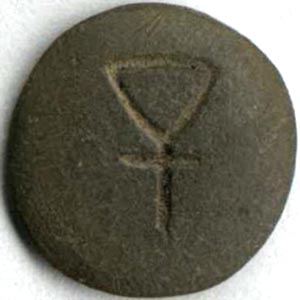 Northern Black Polished Ware developed around 700 BC. It was at its peak from 500-300 BC. This coincided with the rise of Mauryan Empire. Some historians have found out similarities between this and the earlier Harappan culture. These are the ivory dice and combs and the system of weights. Others include the utilization of mud, baked bricks, construction of large units of public architecture, systematic development of hydraulic features and a similar craft industry. However there are some differences too.
Northern Black Polished Ware developed around 700 BC. It was at its peak from 500-300 BC. This coincided with the rise of Mauryan Empire. Some historians have found out similarities between this and the earlier Harappan culture. These are the ivory dice and combs and the system of weights. Others include the utilization of mud, baked bricks, construction of large units of public architecture, systematic development of hydraulic features and a similar craft industry. However there are some differences too.
Some places where Northern Black Polished Ware had been found are Mahasthan, Chandraketugarh, Bangarh, and Mangalkot which are located in West Bengal. This type of pottery is distinctive as it is a very fine grey coloured ware which has a lustrous black surface. This surface was created using an alkali flux that is applied to the surface of the vessel before it was fired. However it is not always black or polished. This pottery is a well fired luxurious pottery that is composed of levigated clay. It is found in different shapes and colours. This pottery has a glossy surface. Northern Black Polished Ware culture started in the middle of Later Vedic Period. This culture has had an impact on Harappa Culture. The impact was seen in the use of the mud bricks, backed bricks, architecture and different crafts.
This ware is an enigmatic ceramic. It has a characteristic gloss. It is considered as a luxury ware. Its sheen is the most distinguishing feature. Its typical shapes include dishes and bowls. Mainly it is found in black colour other colours include steel blue, bronze, pink, violet, silver and gold. Its characteristic gloss is due to the treatment of the slip, using ferric oxide specifically. This pottery has a fine and thin fabric.
The shapes in this pottery are represented by: dishes with inverted or straight sides; bowls with straight, convex, tapering sides; lids with flat terminal; and sharply carinated pots. This pottery has no heavy forms such as storage jars or globular pots. It is believed that it was meant for the elite class. Technologically this pottery was among the best pottery that was produced in the entire World. It was fired in a high temperature and cooled in a reduced atmosphere. The colour variation of the ware was due to the potters` inability to control temperatures.



















